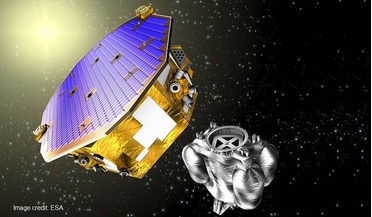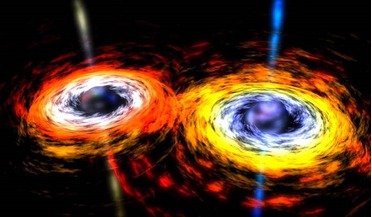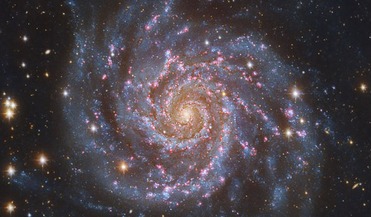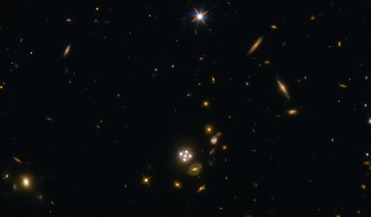 01 December 2015
LISA Pathfinder set for liftoff
01 December 2015
LISA Pathfinder set for liftoff
... of space-time that are theorised by scientists to have been produced in the fractions of a second after the big bang, when the Universe underwent an incredibly rapid period of inflation. These waves are therefore a signature of this inflationary...
 23 February 2016
Researchers probe black-hole mergers with fast-powered winds
23 February 2016
Researchers probe black-hole mergers with fast-powered winds
... unexplained bursts to a background 'hum' from many weak signals from the distant universe, or perhaps even the big bang. Studies such as these could thus help constrain the type of emission produced from various high-energy...
 10 March 2016
Mysterious infrared light that fills the Universe found with ALMA
10 March 2016
Mysterious infrared light that fills the Universe found with ALMA
... that are ubiquitous in the Universe. The CMB is the well known radiation left over from the big bang and the COB has been revealed to be light from a huge number of stars. Until now, it was only...
 13 April 2016
The mystery of neutrino mass to be solved by a calcium isotope
13 April 2016
The mystery of neutrino mass to be solved by a calcium isotope
... would have allowed for the creation of more matter than antimatter in the first moments after the Big Bang. After presenting their findings with calcium-48, the researchers are now working on similar calculations for the...
 16 December 2016
Mini-spiral galaxies may transform how dark matter is perceived
16 December 2016
Mini-spiral galaxies may transform how dark matter is perceived
... does also not explain what the nature of dark matter might be or what happened to antimatter after the big bang. "From our observations, the phenomenon, and thus the necessity, is incredibly obvious. At the same time, this...
 27 January 2017
Distant quasars help refine the rate of the expanding Universe
27 January 2017
Distant quasars help refine the rate of the expanding Universe
... a measurement of the expansion rate is to use the cosmic microwave background (CMB), the "fossil radiation" or "afterglow" of the Big Bang. Using this data, the team behind the Planck mission formulated a different rate of expansion, however others...